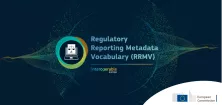

The EU legislation sets obligations on many different stakeholders to regularly report data such as financial transactions, capital liquidity, data breaches, etc. The amount of required data has been increasing in the past years and there is often lack of knowledge on what can be reused*. To avoid overlapping or missed reporting, these obligations are monitored over time according to the European policies. Moreover, they also need to be updated as the legislation changes over time. In effect, regulatory reporting became a complex and burdensome process. This has led to several calls to action for the reduction of reporting burden:
Beyond legislative initiatives, the Commission is also looking into experimental measures that could support cutting red tape. One of them was the Study on Regulatory Reporting Standards (SORTIS). The main goal of the project was to detect legal obligations (‘requests’), in European legislation. A ‘request’ is an obligation organised in a specific format that is defined by an agent (e.g. European Commission) to perform an action (e.g. to report) in a specific interval of time. With help from Professors Monica Palmirani, University of Bologna, and Ashwin Ittoo, University of Liège, the goal was to make reporting requirements machine-readable. Leveraging semantic and AI technologies would bring numerous benefits such as:
* The Importance of Metadata for Regulatory Reporting (Regulatory Reporting Community issue paper).
The main goal of the SORTIS project is to detect reporting requirements (‘requests’), in European legislation. As a result, an ontology Regulatory Reporting Metadata Vocabulary (RRMV) has been developed. This ontology can be used to structure ‘requests’ in legal provisions. For example, in legal editors and systems that manage registries with legal obligations. You can access the technical documentation by clicking here: https://code.europa.eu/regulatory-reporting/rrmv.git
🎥 Watch the webinar during which Professor Palmirani presented the first iteration of the RRMV ontology.
🎓 Take our course What is regulatory reporting and why is it important?
📰 Read our issue papers:
💻 Check out the open-source software
🌐 Visit our page dedicated to streamlining regulatory reporting;
📧 Contact us: eu-digital-ready-policymaking@ec.europa.eu
The goal of the study was to build software that detects reporting obligations in the text and annotate them by using developed regulatory reporting metadata vocabulary (RRMV) as shown in the example below. Thanks to this solution, a policy officer who drafts legislation could verify potential duplications or overlaps of existing reporting requirements. This, in turn, would help determine if a new reporting requirement is needed.
DIRECTIVE (EU) 2019/878 amending Directive 2013/36/EU as regards exempted entities, financial holding companies, mixed financial holding companies, remuneration, supervisory measures and powers and capital conservation measures.

To meet this objective, the study had three main tasks:
The developed regulatory reporting metadata vocabulary is an ontology that can be used to structure reporting requirements (‘requests’) in legal provisions. Through a designed software program this vocabulary could be used to detect and annotate legal texts**. The RRMV is released as an open-source solution that you can access here.
The technical documentation of the SORTIS results is attached below. You can find there:
**Note: the ontology is produced in English. However, it can be incorporated in the text editors based on the national language.
The project brings advantages to many different groups. Depending on your role, below are some examples of how you can benefit from it.
You design and draft policies (e.g. policy officer, lawyer):
You work on leveraging natural language processing (NLP) and AI in the policy drafting process (e.g. semantic engineer, legal informatics expert):
You are subjected to regulatory obligations: